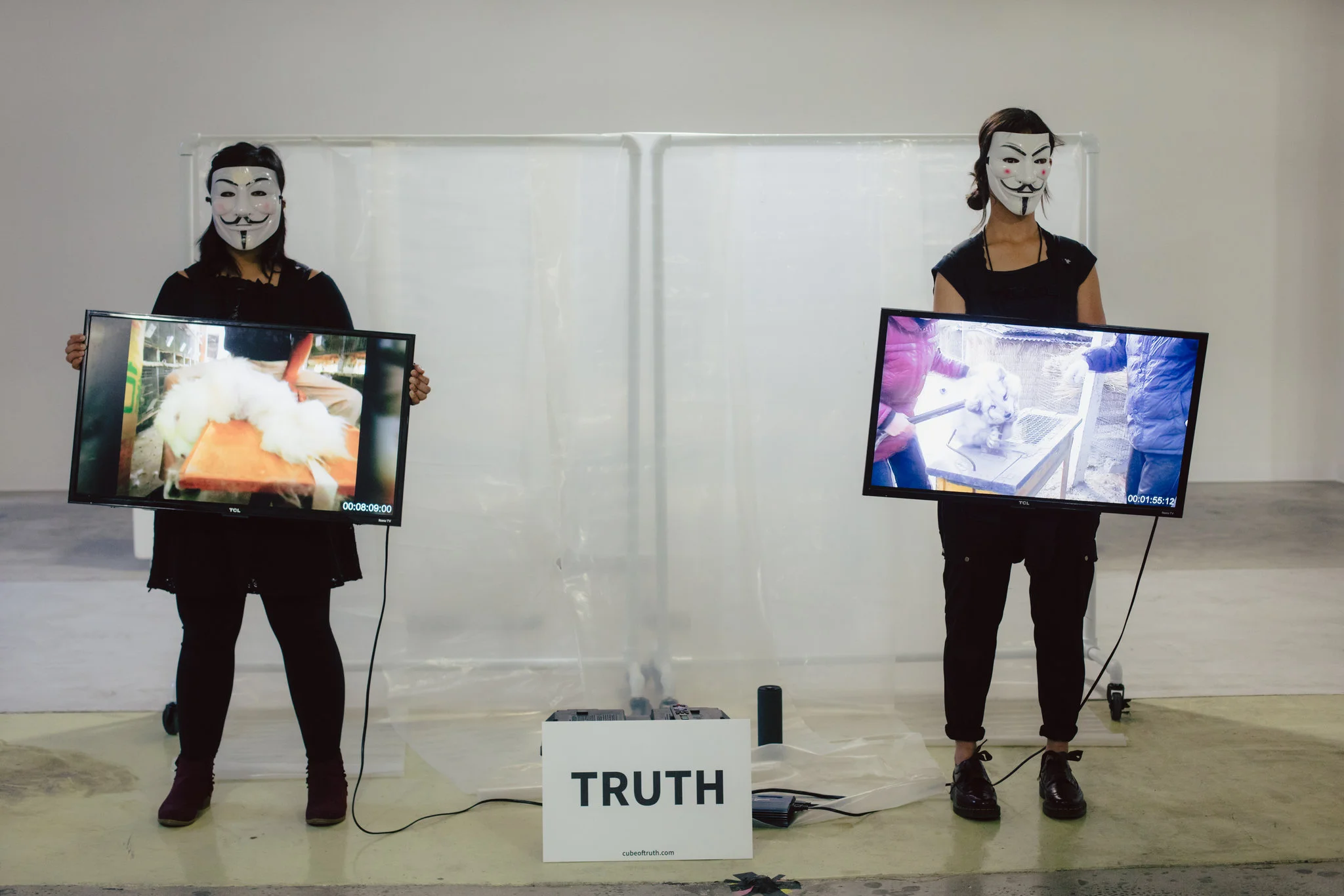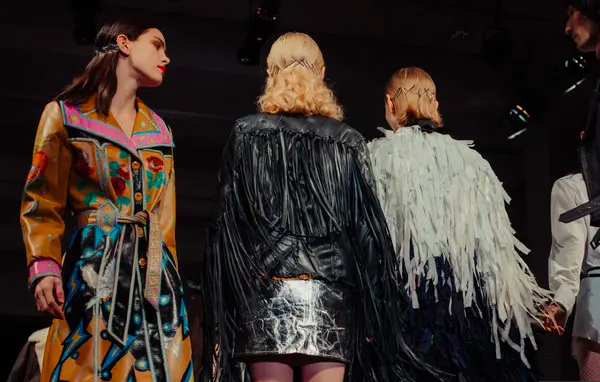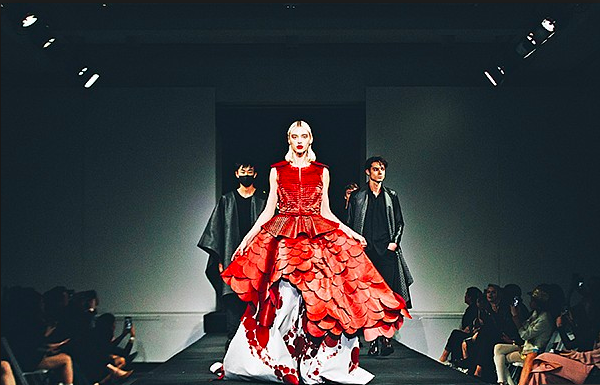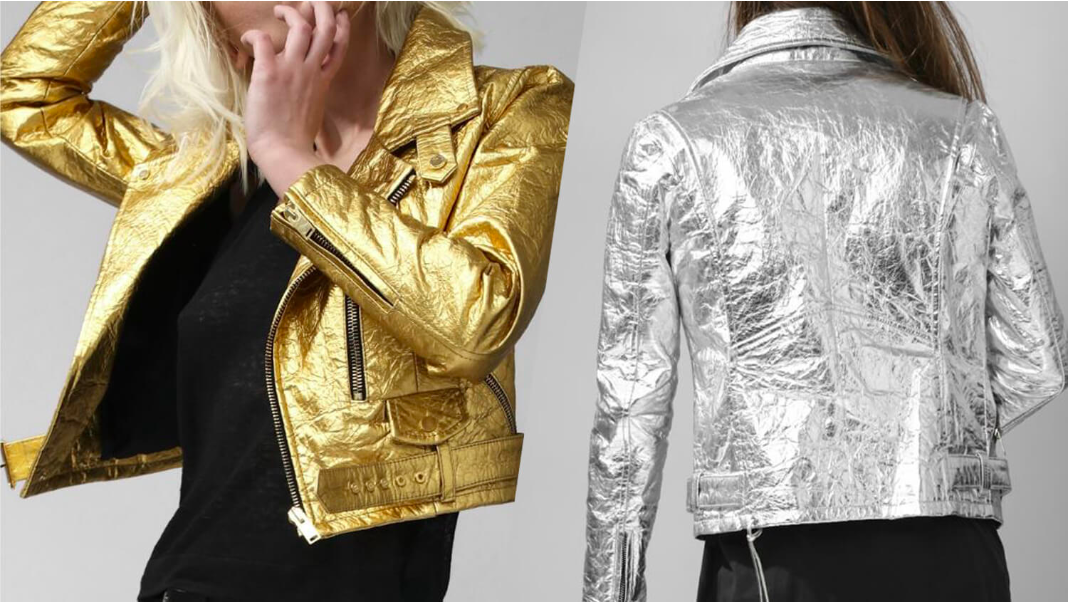L.A. Brings Vegan Fashion to the Masses
Ah Los Angeles… my love, my life, my muse. The land where yoga mats, kombucha, and cannabis lotion are as ubiquitous as cars, coffee, and Juul, has just put on an event so quintessentially L.A. I could cry: Vegan Fashion Week, which ran from February 1-4 at the California Market Center.
Altiir, a vegan leather brand featured coats made of pineapple leather. Photo via
Among runway shows and presentations displaying the work of fully vegan brands, those looking to go vegan, and those somewhere along the way, the week featured a “vegan world” containing animal and cruelty free food, fashion, and beauty products. Guests sampled “foie gras” (faux gras?) and “vurgers” and were exposed to multiple new and innovative textiles, such as pineapple leather, apple leather, corn plastic, and cork.
The event’s organizer, fashion industry veteran Emmanuelle Rienda, wanted to welcome “brands at any stage of vegan fashion or sustainability” so that they “can come together for discussion and extend the idea to come up with solutions that are good for people, the environment, and animals.”
This is a refreshing attitude coming from a community that so often intimidates potential members by vigorously policing the ideal vegan lifestyle. Instead of scaring people away, the event was open to everyone and anyone considering the process of, as Rienda puts it, “creating a lifestyle” of veganism.
Despite the novelty of its conception, Vegan Fashion Week lived up to its stereotypical reputation in a few ways. What can only really be described as vegan ideology often came ahead of environmental concerns about sustainability in fashion, with women in Guy Fawkes masks holding up graphic videos of animals being torn apart. And despite the focus on innovation in textiles, the conversation concerning the ethics of vegan materials is still as active as ever.
Image via
Vegan clothing, aside from omitting leather and fur from its production, can more rigorously exclude fabrics such as silk, wool, and cashmere as well. The problem with all of these exclusions is that the substitute is commonly polyester, which takes an enormous amount of energy to produce, never decomposes, and sheds microplastics when washed.
Vegan clothing can also come at the expense of style, a critical variable to many outside the diehard vegan scene. Although Rienda claims “it’s not a matter of style anymore, it’s a matter of choice,” it’s unrealistic to expect a population obsessed with fast fashion to sacrifice their habits in favor of less current, more expensive vegan products. It can be difficult to navigate the industry while also being mindful of animals, the environment, your wallet, and your personal style, which can get left out of the equation by sustainable or vegan brands.
Mistohn featured vegan capes made of pinatex, a recycled pineapple fibre. Image via
That being said, many designers featured products that were stylish and eco-friendly as well as vegan. Mink, a vegan celeb favorite, featured shoes with corn plastic soles and the vegan shoe label New Rock is beginning to make sneakers with pineapple leather and are looking at trying out coconut fiber soles. And even with cork and pineapple flying about, it was a Fashion Week after all, and there were several show-stopping as well as wearable looks.
Price continues to be a recurrent problem, however; the lowest priced top from the eco-friendly brand Enda was $295, for instance. As technology improves and more companies respond to growing consumer demand, we can only hope that will change.
Rienda describes vegan fashion as, “such a grassroots movement,” but the most effective movements are bottom up as well as top down. With brands like Chanel, Burberry, Versace, and Gucci, as well as the entirety of Los Angeles, pledging to stop the production of fur and exotic skins, the vegan movement is trickling from the top too. The music artist and vegan icon Moby is confident in the change that Vegan Fashion week can spark in the fashion industry and around the world, pointing out “if you look at the last hundred years, how many world-changing movements have come from Los Angeles? This is the incubator for trends that spread into and change the rest of the world.”
With my beloved L.A. leading the way, it’s time for pineapple, cork, and corn to become as ubiquitous in the fashion industry as polyester, fur, and leather are now.
Featured photo via Enda USA.












